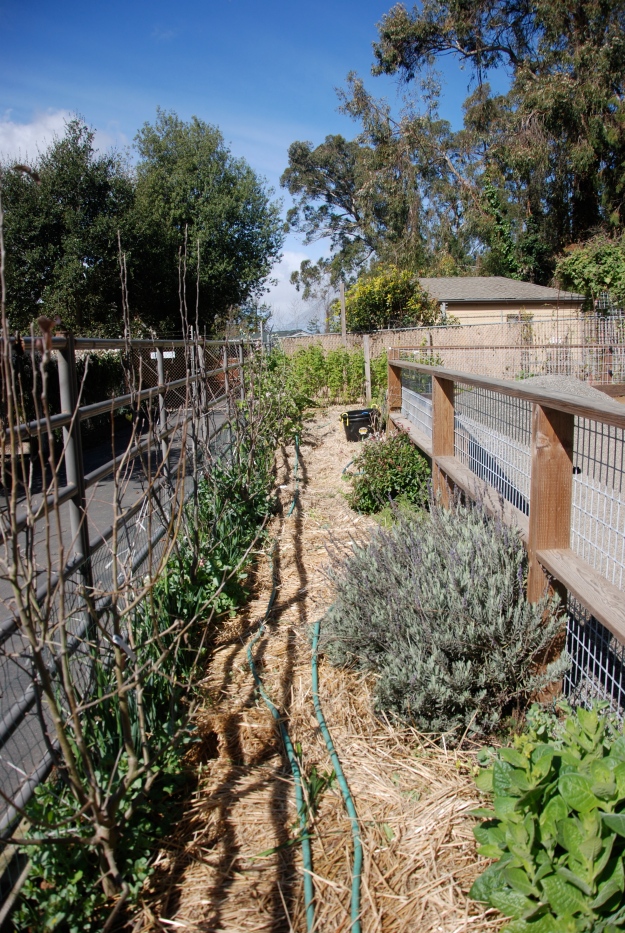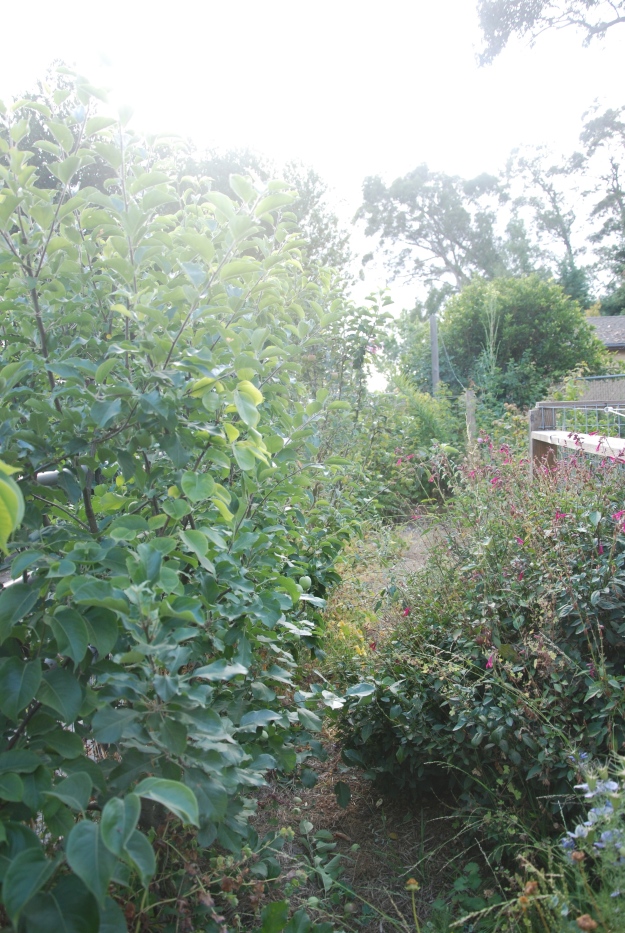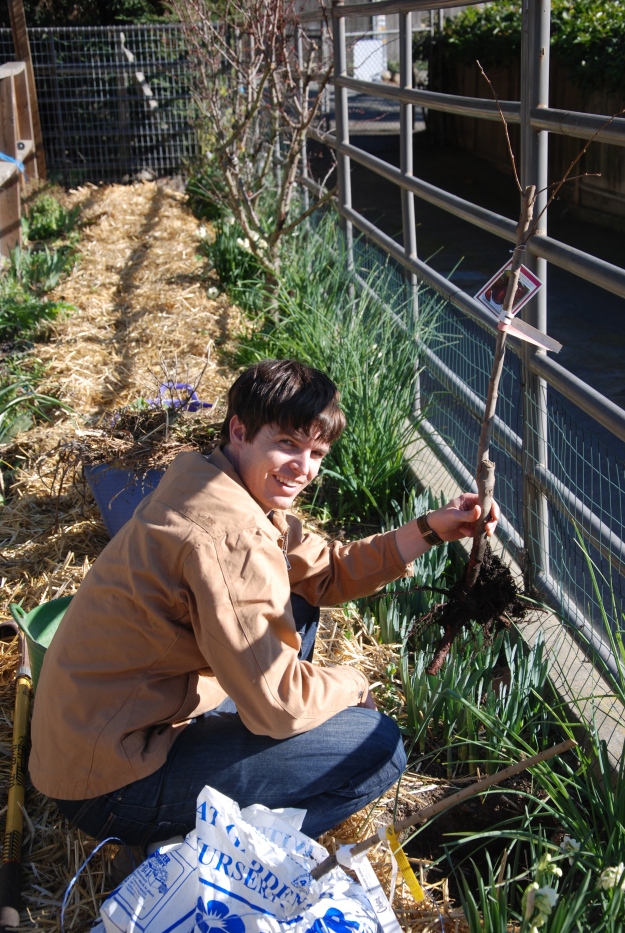I admire people that landscape well. Follow a plan. Make a plan to begin with! I am far too much of a crazy plant collector to accomplish these tasks. I get so excited about particular plants that I have a hard time adhering to the basic rules of good design. I stuff things in wherever I think they might survive and rarely buy more than one of anything, much less the odd numbers of things that work well for groupings. I sacrifice cohesion for the delight I get from the individuals. This past week I literally gasped to see that one of the bulbs I planted in Fall 2011, that did nothing of note last Spring, is suddenly in sparkly bloom.
Nope, I didn’t plant it in a drift or next to anything that will provide a complementary color or contrasting texture. Totally worth it.
So this never ending desire to collect, combined with our limited sunny space for growing, has spilled over into our edibles and made me a devout follower of Backyard Orchard Culture. Instead of one large fruit tree that will grow too tall to harvest from the ground, make lots of shade, and provide way too much fruit for one household at the time of ripening, you plant perhaps 4 trees in the same space. The key is controlling the size of each tree, ending up with what are essentially large fruit shrubs that can easily be harvested and pruned from the ground. Size control is achieved by severe pruning at the start of the tree’s life, root competition between the trees, and pruning while the tree is in leaf to limit photosynthesis. You can easily extend your harvest by choosing varieties that will ripen at different times in the season.
There are many different ways to configure one’s orchard- for more info check out Dave Wilson Nursery’s website. In our space we chose to plant trees about 6 feet apart along a metal pipe fence. We loosely espaliered them to keep them from getting wide and taking over the path beside them. Their roots compete with one another, as well as being limited by the concrete retaining wall of the fence. We have 16 trees along this fence line, 4 citrus trees bordering the veggie beds, and 3 more citrus in pots on a deck. 23 varieties of fruit on our tiny homestead! Miraculous!
This year we are replacing six trees that proved to be less fruitful or required extra work to keep healthy. It’s survival of the fittest on this homestead! In our mostly frost free area January is the time to plant for a successful Backyard Orchard Culture. The trees come dormant, with their roots bare of dirt. The first pruning cut is the most important. Whack those buggy whips off at about 18″ to promote the development of very low branches.
Not only does this make sense for all the future development of the above ground part of the tree, but check out what you have to put under the ground:
Ak! The size of the root ball on bare root trees is totally anxiety producing. How can that meager clump support a whole tree? In truth, it can’t do it very well. If you let a tree push new growth all the way up a 6 or 7 foot trunk the first year after it has been dug out in this fashion it will likely be a sad, stressed out tree. That’s why it’s better not to buy the trees later in the year that have been potted up by the nurseries without real pruning. Best to wait until next year. If you get to the nursery very soon, however, whack away and feel good about it! Balance that shoot to the roots.
You’ll be glad to know I had the family members who are not 38 weeks pregnant helping with the digging and heavy lifting. I had one especially enthusiastic helper:
Good times!






